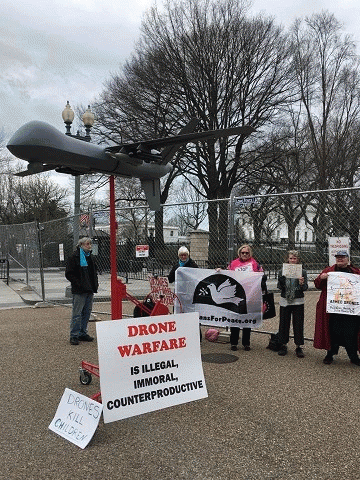In December 2001, a little over 15 years ago, I was on the small five-person team that reopened the U.S. Embassy in Kabul, Afghanistan. Now 15 years later, the same questions we asked almost two decades ago are being asked about the U.S. involvement in Afghanistan and we are getting many of the same answers.
The questions are: why have we been in Afghanistan for 15 years and where are the billions of dollars the U.S. put into Afghanistan?
And the answers are the same year after year -- the U.S. is in Afghanistan to defeat the Taliban and al Qaeda, (and now other extremists groups) so they can't attack the United States. For 15 years, the most advanced and well-funded military in the world has attempted to defeat the Taliban and Al Qaeda, arguably the least funded and least equipped militia forces in the world, and has not succeeded.
Where has the money gone? Much has gone to Dubai for apartments and condos for Afghan leaders and to contractors (U.S., Afghan and others) who have made millions off the U.S. involvement in Afghanistan.
At the February 9, 2017, Senate Armed Services committee hearing on Afghanistan, John Nicholson, the commanding General of U.S. Forces in Afghanistan, answered questions for two hours in the Senate hearing about U.S. involvement in Afghanistan. He also submitted a 20-page written statement on the current situation in Afghanistan.
In response to one Senator's question, "Is Russia meddling in Afghanistan?" Nicholson responded: "While Russia has counter-narcotics about Afghanistan and terrorist attack concerns from the extremist groups in Afghanistan, since 2016 we believe Russia has been helping the Taliban in order to undermine the U.S. and NATO mission. The Taliban is the medium through which other extremist groups operate in Afghanistan. We are concerned about the increasing cooperation between Russia and Pakistan that continues to provide a sanctuary for Taliban senior leadership. Russia and Pakistan have held joint military exercises in Pakistan. We and our Central Asian allies are nervous about Russian intentions."
Nicholson said, "progress continues to be made on the U.S. mission of training, advising and assessing (TAA) the Afghan security forces." No Senator asked why after 16 years the U.S. has to continue to do the same training -- and how long this type of training had to go on to train forces capable of defeating the Taliban and other groups.
Nicholson said that U.S. and NATO had committed to a minimum of four more years in Afghanistan at the NATO conference in Warsaw, Poland in July 2016. At a donor's conference in Brussels in October 2016, 75 donor countries offered $15 billion for the continued reconstruction of Afghanistan. The U.S. will continue contributing $5 billion per year through 2020.
In his written statement Nicholson added that 30 other nations pledged more than $800M annually to fund the Afghan National Defense and Security Forces (ANDSF) until the end of 2020 and that in September, India added $1B to the $2B it already committed to Afghanistan's development.
Since 2002, the U.S. Congress has appropriated more than $117 billion for Afghanistan's reconstruction (training Afghan security forces, standing up the Afghan government, providing health care and education to the Afghan people, and developing the Afghan economy), the largest expenditure to rebuild any country in the history of the United States.
Nicholson said the 8,448 U.S. military personnel in Afghanistan now must remain to protect the U.S. from extremist groups in Afghanistan and Pakistan where 20 of the 98 designated terrorist groups in the world are located. He said there is no cooperation between the Afghanistan Taliban and ISIS, but that most ISIS fighters come from/through the Pakistani Taliban.
A year ago, as of March 2016, there were approximately 28,600 Department of Defense (DOD) contractor personnel in Afghanistan, compared to 8,730 U.S. troops, with contract personnel representing approximately 77% of the total DOD presence in country. Of the 28,600 DOD contractor personnel, 9,640 were U.S. nationals and approximately 870, or about 3%, were private security contractors.
Since the military troop levels have remained the same in the past year, one would extrapolate that the number of civilian contractors is about the same for 2017 for a total of about 37,000 U.S. military personnel and DOD contractors in Afghanistan.
The largest number of U.S. military in Afghanistan was 99,800 in the second quarter of 2011 and the highest number of military contractors was 117,227 of which 34,765 were U.S. nationals was in the second quarter of 2012 for a total of approximately 200,000 U.S. personnel in the country, excluding State Department employees and contractors. Data on the numbers of State Department personnel and contractors each year in Afghanistan is not available.
(Note: You can view every article as one long page if you sign up as an Advocate Member, or higher).






